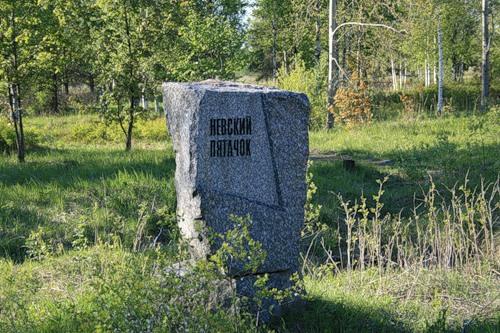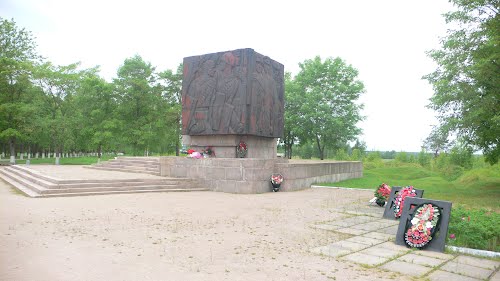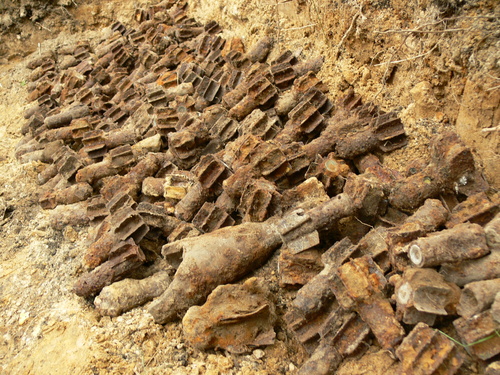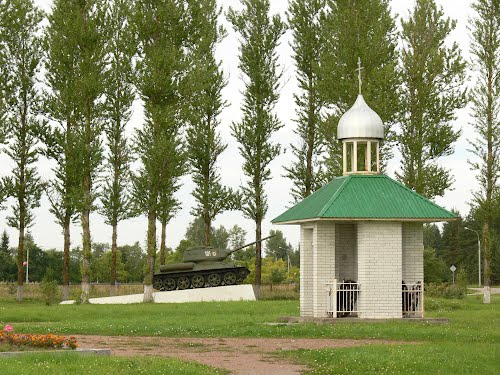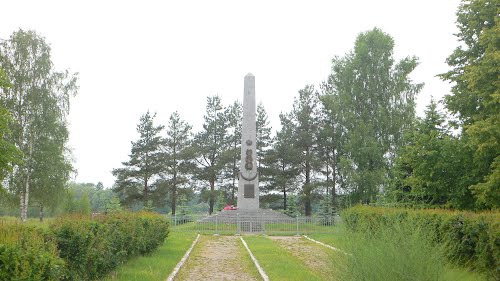Nevsky Pyatachok is the name of the Neva Bridgehead 50 km east south-east of Leningrad and 15 km south of Shlisselburg. It was the site of one of the most critical and costly campaigns during the Siege of Leningrad from September 1941 until May 1943 to reopen land communications with the city during the German siege.
Campaign for the land communications
The area between Shlisselburg and the bend of the Neva to the south represented the land link between the Soviet-controlled territory and the city defence perimeter. The Red Army objective was to retain this narrow stretch of the shore and prevent German forces from completing the blockade, thus allowing transports to reach the population in besieged Leningrad with food, medications and other supplies.
The area was first defended by the Red Army's Krasnogvardeisk Fortified Region, the 55th and the 48th Armies which included the 45th Guards, 115th, 86th, 168th, 10th Rifle Divisions, 1st NKVD Rifle Division and 4th Separate Naval Infantry Brigade. On 7 September 1941 the German 20th Motorised Division was able to force the elements of the 48th Army out of Shlisselburg, setting the stage for a more than two-year struggle to reopen the land communications with Leningrad by the Red Army.
Initially the Germans secured the area. On September 20, 1941, the Soviets managed to cross the river and establish the bridgehead, but they failed to enlarge it. The Germans managed to eliminate the bridgehead by April 29, 1942, but it was re-established on September 26, 1942.
The battle for Nevsky Pyatachok extended from January 1942 to May 1943.
1942 the area was a scene of heavy fighting for the German XXVIII Army Corps which, from October 1942, was under a constant assault by the 67th Army.
Eventually Leonid Govorov proposed two operations to the Stavka, called the Shlisselburg Operation and the Uritsk Operation, which became the basis of the planning for Operation Iskra. The intention was for the 2nd Shock Army of the Volkhov Front and the 67th Army of the Leningrad Front to destroy the German troops in the Shlisselburg - Siniavino sector, thereby restoring the land communications and raising the siege. They were supported in this by the 13th Air Army and some units of the Long Range Aviation.
Although the south-eastern perimeter of the siege was temporarily penetrated, Soviet forces only managed to open a 10–12 km wide corridor, meaning all traffic passed under the fire of German guns. German casualties for the duration of the struggle for the bridgehead, estimated to be 1 km by 1.5 km in area, were some 160,000.
These, and other operations conducted until 10 May 1943, resulted in Red Army casualties estimated at 260,000 in this sector of the front.
After World War II
After the war, a tradition began in which the children of Leningrad schools took summer trips to the area to search for numerous remains of those that died there. Official burial ceremonies were then held commemorating the dead of those battles. The ground there still contains unidentifiable skeletal remains.
National memorial
Today the battlefield of Nevsky Pyatachok is a well-known national and historic landmark in Russia. A memorial was built as part of the "Green Belt of Glory" commemorating the heroic resistance during the siege of Leningrad.


